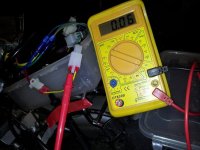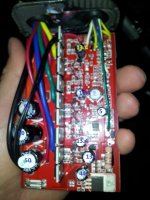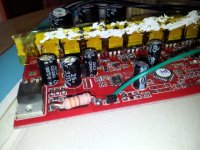OK, 60mA means that the 180 ohm resistor that's in there at the moment (the big one with the brown - grey - brown stripes) is dropping 180 x 0.06 = 10.6V. The regulator will be delivering around 12 to 13V, and has a maximum permitted voltage across it of 40V, so that means that, to be safe, the resistor value needs to be increased so that it can drop at least 62V - 40V - 12V = 10V, which is right on the edge for that 180ohm resistor.
To give things a safe margin, then the resistor needs to drop around 20V at 60mA, which means it needs to have a value of around 20 / 0.06 = 333 ohms. The closest preferred value resistor to this is 330 ohm, which will be fine.
The power rating that the resistor will need is given by the voltage dropped across it, about 20V, multiplied by the current flowing through it, 0.06A. 20 x 0.06 = 1.2W. A 2W resistor should be fine.
So, if you change the 180 ohm resistor one for a similar size 330 ohm, 2W, one then that should be near-perfect.





